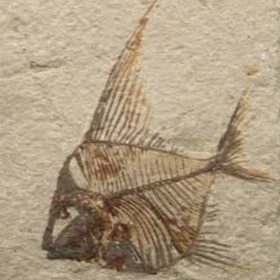The Overlooked Flood Stage
By Carla Estell 2020
Creation geologists categorize the Flood into two main phases, the inundating and retreating. Yet there is another phase that is often overlooked. After being inundated with water, yet before the water started to retreat, the earth would have been covered by a global sea. Genesis 8:4 states that the ark rested on the mountains of Ararat on the 150th day of the Flood, this is 5 months into the Flood. Yet, it was another 2 ½ months before Noah saw any of the surrounding mountain tops. For at least 3 and possibly 6 months, the earth was covered by a global sea. Is there any evidence that the earth was once a global sea? Yes there is. During this global sea phase of the Flood, sea life would have prospered from pole to pole, and we find:
- coral in the Arctic Circle
- sea shells on mountain tops
- complete crinoids in Illinois and Kentucky
- jellyfish in Wisconsin
- abundant shark’s teeth scattered across the continents
Like a frog which lives as a tadpole before becoming a frog, so many ocean floor creatures live as tiny larvae swimming at the surface (called zooplankton) before sinking to the sea floor and beginning their adult life. Many sea creatures, such as crinoids, grow from larvae to reproducing adults in just months. So during the global sea phase, the pre-flood larvae would have sunk to the new ocean floor reestablishing life on top of the layers of sediment that were laid during the inundating phase. When the uplift and retreating phase began not only was there great erosion, but much of the eroded sediment formed new strata burying much of this sea life. This new Flood strata contains broken pieces of the sea life that had become established during the global sea phase.
Meanwhile sharks were swimming from pole to pole, feasting on both the floating and sinking dead animals. Since they readily shed their teeth while continually growing new ones, they have left an abundant supply of teeth throughout the fossil record. Scientists have even discovered tiny shark teeth in the dirt (matrix) which encased the famous T-Rex named Sue. But, because sharks have a skeletal system of cartilage instead of bone, usually only their teeth survive. However, an amazing discovery has been made in Mammoth Cave in Kentucky – fossilized sharks embedded in the walls of the cave.
Due to the globe circling currents, the carcasses of animals and floating plant material would have collected towards the Polar Regions. Peat would have collected beneath the floating log mats; some of the floating trees would have become waterlogged and sank. In the fossil record we find extensive coalbeds, petrified wood and bones. By studying the global sea phase, geologist can discover some very persuasive evidences of the global Flood.

Find out more …
- About The Estells
- Another possible solution for disharmonious associations in Ice Age deposits
- Articles
- Connecting the Dots
- Contact information
- Creation based VBS
- Creation Resources
- Crinoid Fossils: Evidence of Millions of Years or the Global Flood?
- Did Winter Cleanse the Flood Water of Excess Salt?
- Do Antarctic Fossil Forests Prove Trees Grew near the South Pole?
- Educational Resources
- Fish Fossil
- Fish Fossils
- Geodes: Crystals Hidden Within a Round Rock
- Geology Explained in Terms of Global Flood Recovery
- God’s Forgotten Promise
- Living Fossils
- Making logical sense of earth’s geological column.
- Mount Saint Helens
- Mount Saint Helens
- Petrified Wood
- Petrified Wood
- Post Flood Migration of Mammals
- Printed Letters to the Editor
- Resources
- Reverse Engineering the Grand Canyon
- Seeing God’s Ingenuity in Earth’s Design
- Seminar descriptions with Fliers and Bios
- Seminar Topics
- sliderImages
- Songs and Poems
- Tapirs, Endangered or Hardy Survivors?
- The Demise of the Mammoths
- The Flood
- The launching of our creation ministry
- The Overlooked Flood Stage
- The Rewriting of Paradise
- The Rocks Speak Out
- The Stones’ Story Retold
- The Stones’ True Story
- The Way of Salvation
- Videos
- Was there an Ice Age?
- Whale Falls: Present Key to the Abundance of Sea Invertebrate Fossils

